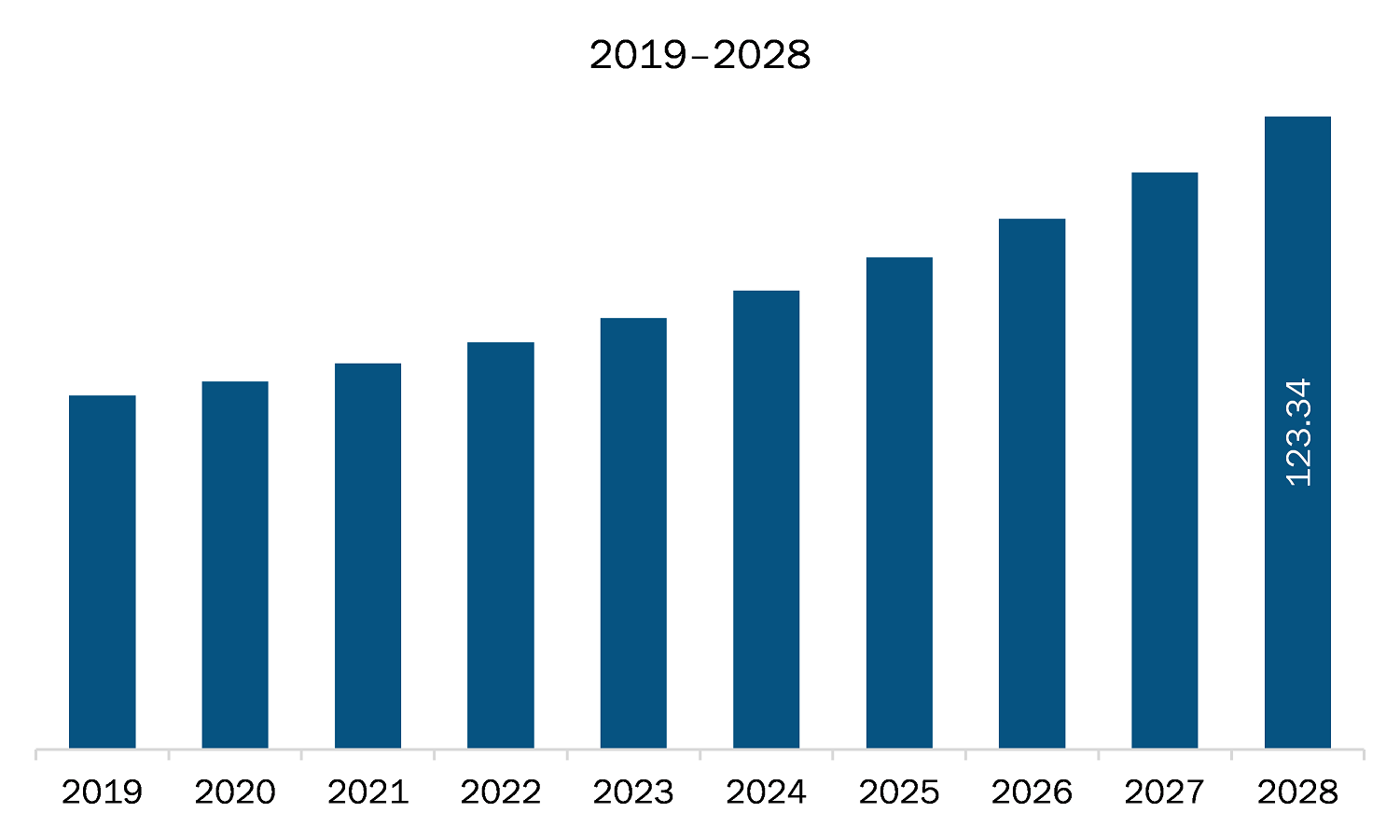The virtual queue management system market in Europe is expected to grow from US$ 75.29 million in 2021 to US$ 123.34 million by 2028; it is estimated to grow at a CAGR of 7.3% from 2021 to 2028.
Germany, France, Italy, Russia, UK are major economies in Europe. With increasing competition across various industries, organizations are emphasizing massively on customer retention to stay competitive in the marketplace. Lately, customer service has gained significant importance and investment in various advanced technologies, including virtual queue management solutions, to streamline the customer service processes to enhance the overall customer experience. The virtual queue management solutions are powered by features such as online appointment booking, virtual queuing via smartphone, customer feedback surveys, and real-time monitoring. Using such solutions, the customers are placed in virtual waiting queue to place their service order/request using digital devices such as smartphones or personal computer while eliminating the need of waiting in physical queues. By using virtual queue management solutions, organizations can reduce waiting periods, streamline communication, and improve staff efficiency and service quality, and better customer flow management, which subsequently lead to improved customer satisfaction. Samsung, Nike, NHS, Tesco, NatWest, Walmart, Tickets.com, and Five Guys are among the well-known organizations that have significantly invested in virtual queue management solutions. Thus, the increasing importance of customer service in modern day marketplace is driving the growth of the virtual queue management system market.
The European region witnessed a varying impact of the COVID-19 pandemic across its economically diverse countries. For instance, countries such as Germany, the UK, the Netherlands, and France imposed stringent government restrictions and closed their borders to curb the virus spread. Additionally, countries such as Italy, Russia, and Spain witnessed a significant surge in cases, which led them to shut down business and manufacturing operations for a few months. However, numerous European countries witnessed swift recover from quarter 4 of 2020. Irrespective of the surge in number of COVID-19 cases and shutting down of business operations for months, manufacturers had to continue the production of essential products, resume it earlier than other businesses. However, since the travel activities were closed and theme parks, public places such as offices and corporate buildings were shutdown, the virtual queue management system market was heavily impacted. However, the pandemic brought a lot of positives for virtual queue management system market as many government offices, banks, healthcare, and other public places started using this technology in order to implement social distancing laws and improve public safety. For instance, in 36 branches in Bosnia and Herzegovina, Raiffeisen Bank has officially deployed SEDCO's full client visit management technology. Raiffeisen is taking this step to become a smart branch, with the ability to monitor the performance of all branches from the head office. In addition, British Airways and Qmatic have formed a new partnership. Also, companies operating in the region such as Akis Technologies are implementing new marketing strategies to offer their queue management solutions across Europe.
With the new features and technologies, vendors can attract new customers and expand their footprints in emerging markets. This factor is likely to drive the virtual queue management system market. The Europe virtual queue management system market is expected to grow at a good CAGR during the forecast period.

- This FREE sample will include data analysis, ranging from market trends to estimates and forecasts.
Europe Virtual Queue Management System Market Segmentation
Europe Virtual Queue Management System Market – By Component
- Solution
- Services
Europe Virtual Queue Management System Market – By Platform
- Web-Based
- Kiosk Based
- Mobile Based
Europe Virtual Queue Management System Market – By Organization Size
- Small and Medium Enterprises
- Large Enterprises
Europe Virtual Queue Management System Market – By End-User
- Retail
- Hospitals and Clinic
- Airports
- Museums and Libraries
- Others
Europe Virtual Queue Management System Market- By Country
- Germany
- France
- Italy
- Russia
- UK
- Rest of Europe
Europe Virtual Queue Management System Market-Companies Mentioned
- accesso Technology Group, plc
- Advantech Co. Ltd.
- AKIS Technologies
- Hague Australia
- Ombori
- Qmatic
- Queue-it
Europe Virtual Queue Management System Report Scope
| Report Attribute | Details |
|---|---|
| Market size in 2021 | US$ 75.29 Million |
| Market Size by 2028 | US$ 123.34 Million |
| CAGR (2021 - 2028) | 7.3% |
| Historical Data | 2019-2020 |
| Forecast period | 2022-2028 |
| Segments Covered |
By Component
|
| Regions and Countries Covered |
Europe
|
| Market leaders and key company profiles |
|
- Historical Analysis (2 Years), Base Year, Forecast (7 Years) with CAGR
- PEST and SWOT Analysis
- Market Size Value / Volume - Regional, Country
- Industry and Competitive Landscape
- Excel Dataset
Recent Reports
Testimonials
Reason to Buy
- Informed Decision-Making
- Understanding Market Dynamics
- Competitive Analysis
- Identifying Emerging Markets
- Customer Insights
- Market Forecasts
- Risk Mitigation
- Boosting Operational Efficiency
- Strategic Planning
- Investment Justification
- Tracking Industry Innovations
- Aligning with Regulatory Trends





















 Get Free Sample For
Get Free Sample For